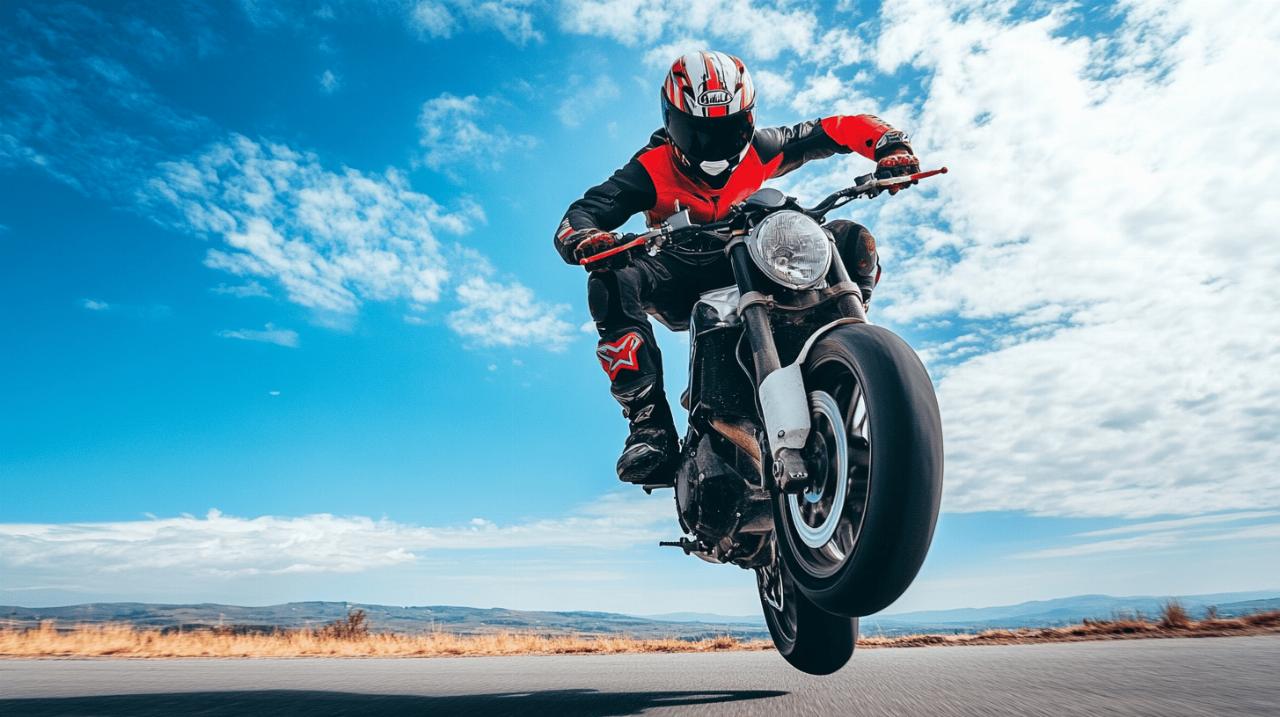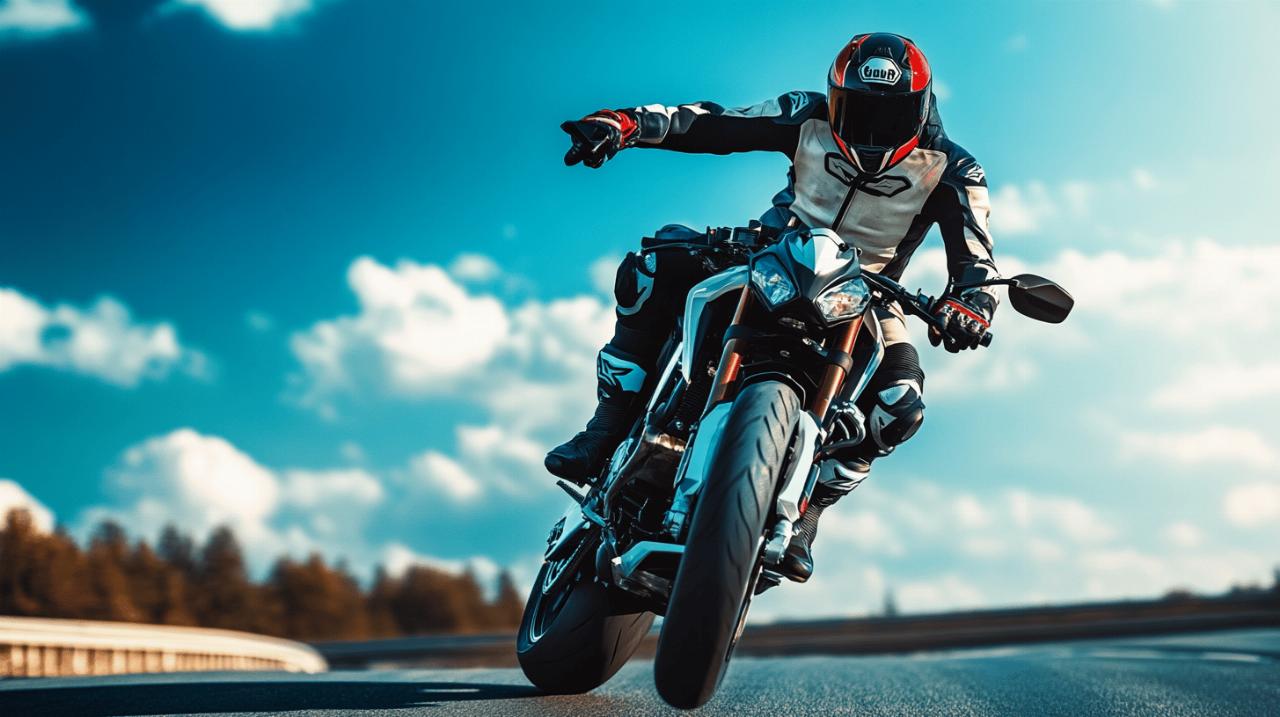
Motorcycle wheelies are an exhilarating yet challenging skill that many riders aspire to master. While these stunts showcase impressive control and balance, they also come with significant risks and legal considerations. This comprehensive guide will walk you through the essential aspects of performing wheelies safely and responsibly in the UK, ensuring you stay within the law while developing your skills.
Essential safety gear for wheelie practitioners
Before attempting any motorcycle stunt, proper safety equipment is non-negotiable. The UK has strict regulations regarding motorbike accident compensation claims, and riding without appropriate gear not only puts you at risk but could complicate any potential claims through firms like White Dalton Solicitors should an incident occur. Every rider attempting wheelies must prioritize safety above all else.
Protective equipment you simply cannot go without
Safety gear forms your first line of defence when practicing wheelies. A full motorcycle suit with integrated or separate back protector is essential for spine protection during the awkward landing that can occur when a wheelie goes wrong. Quality motorcycle boots with ankle support are crucial as they help maintain proper foot position on the pegs during the stunt. Gloves with palm sliders provide grip on the controls and protection if you need to break a fall. Remember that motorcycle legal advice experts consistently emphasize that inadequate protection can affect compensation claims following accidents.
Quality helmets and impact protection systems
Your helmet choice deserves special attention when practicing wheelies. Only use helmets meeting British or European safety standards as required by UK motorcycle laws. Full-face helmets offer superior protection for your jaw and face compared to open-face alternatives. Many professional stunt riders opt for helmets with additional neck bracing systems to reduce the risk of cervical injuries during unexpected wheelie outcomes. Modern helmets with Multi-directional Impact Protection Systems can significantly reduce rotational forces on the brain during an impact, providing crucial protection during the high-risk learning phase of wheelie practice.
Motorcycle setup and preparation
The condition and configuration of your motorcycle significantly impact wheelie safety and success. Different bikes have varying wheelie characteristics based on their design, with some naturally more inclined to lift the front wheel than others. Understanding your specific motorcycle's tendencies is crucial before attempting this advanced riding technique.
Mechanical modifications for wheelie stability
Several key modifications can improve wheelie stability and control. A reinforced chain and sprocket system is essential as wheelies place tremendous stress on your drivetrain. Many riders adjust their gearing with a larger rear sprocket to make power delivery more manageable during the initial lift phase. Crash bars and frame sliders serve as valuable insurance against costly damage during inevitable learning mishaps. Suspension tuning is also critical, with many experienced wheelie riders opting for stiffer rear suspension to manage the weight transfer more predictably. Before making modifications, consult with specialists who understand both the technical and legal aspects, as some changes could affect your motorcycle MOT test requirements.
Proper maintenance checks before attempting stunts
Thorough mechanical inspection is vital before any wheelie practice session. Verify your tyre condition and pressure, as the rear tyre bears extraordinary forces during a wheelie. Check your brake system thoroughly, with special attention to the rear brake which becomes your primary speed control when the front wheel is elevated. Ensure your clutch is in perfect working order as it manages the critical power delivery that initiates the wheelie. Oil levels must be optimal since prolonged wheelies can affect lubrication in certain engine designs. These checks align with general motorcycle safety standards but become even more critical when performing technical stunts that push your bike beyond normal operating parameters.
Mastering the wheelie technique
 The actual execution of a wheelie requires a combination of technical skill, throttle control, and body positioning. This is where many riders make critical errors that can lead to accidents or bike damage. Understanding the fundamental physics involved helps develop safer, more controlled wheelies.
The actual execution of a wheelie requires a combination of technical skill, throttle control, and body positioning. This is where many riders make critical errors that can lead to accidents or bike damage. Understanding the fundamental physics involved helps develop safer, more controlled wheelies.
Step-by-step guide to lifting your front wheel
Begin in first or second gear at approximately 15-20 mph on a straight, empty stretch away from public roads. Slightly compress the front suspension by applying gentle pressure to the handlebars, then quickly release while simultaneously applying a controlled throttle increase. Your body position is crucial, with your weight slightly back but arms relaxed. The rear brake becomes your primary safety mechanism when the front wheel rises, allowing you to modulate the wheelie height. Start with modest lifts rather than dramatic elevations until you develop consistent control. Practice should ideally occur under supervision from experienced riders, perhaps through organisations like Phoenix Motorcycle Training that offer controlled environments for skill development. Remember that different motorcycle licence categories limit the power of bikes you can legally ride, which affects wheelie characteristics.
Common Mistakes and How to Avoid Them
Many new riders apply excessive throttle causing dangerous over-rotation that can lead to falling backward. Maintain a smooth, progressive throttle application instead of sudden bursts of power. Another frequent error is stiffening the arms and gripping the handlebars too tightly, which reduces control and feedback. Keep your upper body relaxed while maintaining core engagement for stability. Improper foot positioning on the rear brake can lead to panic reactions and loss of control; practice covering the rear brake instinctively before attempting wheelies. Many riders also make the mistake of practicing on inappropriate surfaces; always choose clean, smooth pavement free of gravel, oil, or other hazards. These technical aspects are rarely covered in basic Compulsory Basic Training but are essential for advanced riding skills.
Uk legal framework and responsible riding
Understanding the legal implications of wheelies in the UK is essential for any rider considering this skill. The road rules for motorcyclists clearly define what constitutes dangerous riding, and wheelies often fall into this category when performed inappropriately.
Where and When Wheelies Are Permitted in Britain
Wheelies are categorically prohibited on public roads throughout the UK, regardless of traffic conditions or time of day. They are classified as dangerous riding under Section 2A of the Road Traffic Act 1988. The only legal venues for practicing wheelies are private property with owner permission, closed circuits, or dedicated stunt riding events. Several motorcycle training facilities across Britain offer controlled environments specifically for developing technical skills like wheelies. These venues typically require proof of appropriate insurance types that cover stunt riding, which standard policies often exclude. When seeking such venues, verify they have proper permits and safety protocols in place. Even when riding on private land, noise regulations and other local ordinances may still apply, so thorough research of local restrictions remains important.
Potential Consequences of Stunt Riding on Public Roads
The legal penalties for motorcyclists performing wheelies on public roads are severe and far-reaching. Riders caught performing wheelies can face charges of dangerous driving, which carries potential penalties of unlimited fines, 3-11 penalty points, mandatory disqualification from driving, and even imprisonment in serious cases. Your motorcycle could be seized under Section 59 of the Police Reform Act. Insurance implications are equally serious, with likely policy cancellation and significantly increased premiums for years afterward. Drink driving limits apply the same as normal riding, with impairment making stunt riding even more dangerous and legally problematic. For younger riders under restricted AM Licence, A1 Licence, or A2 Licence categories, the consequences could include extended restrictions or revocation of progressive access opportunities. The financial impact extends beyond legal penalties to potential civil liability for any damages or injuries caused.
Mastering motorcycle wheelies requires dedication to safety, technical skill development, and strict adherence to legal boundaries. By following proper training methods, using appropriate safety gear, maintaining your motorcycle meticulously, and practicing exclusively in legal venues, you can enjoy this challenging aspect of motorcycle control while minimizing risks to yourself and others. Remember that responsible riding reflects on the entire motorcycling community and helps preserve access to the sport we all enjoy.